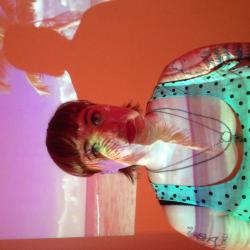After several years of trying different steps and shapes, the festival that unites Iceland’s freelance dance professionals has found a new model that could serve to move it even further. Starting last year, the festival adopted the model of choosing artistic directors to curate each event, who would in turn take one the following year’s directors as apprentices.
It was thus in 2012 that the job began for Erna Ómarsdóttir and Valdimar Jóhannsson, life and creative partners and current artistic directors for this year’s Reykjavík Dance Festival. Both have been fervently active in the performing arts in town for years now. Erna as an independent choreographer and dancer, and Valdi as a core member of the bands Reykjavík! and Nine-Elevens. They have also created numerous works together, most notably ‘The Tickling Death Machine,’ ‘Teach Us To Outgrow Our Madness,’ and ‘Lazyblood’. With Erna on the verge of breaking water of her and Valdi’s second child, they met with us to discuss their other new baby: the festival.
THE THEME IS OVERKILL!
What was your overall vision for this festival and does it differ much from last year?
Erna: The whole festival is quite experimental. I think that last year it was good that they tried something totally different, and it was necessary, but it might have connected to the public better. This year will be totally different. Peoples’ concept of dance and choreography will expand if they come to see a few different pieces. In Iceland, we only get one or two flavours of dance, but there is so much variety.
Valdi: The theme, I would say, would be ‘overkill’. Because we wanted to do something larger than before, and it became larger than the large we were expecting. Some of these pieces are doing choreography for stuff, not people, for example. They don’t have bodies in them.
In what sense?
V: For instance, dancing curtains. Choreography for fireworks. A dance show taking place in Bónus. It’s nice to take the festival out of the dance community a bit. It’s happening all over town—in Harpa, Dansverkstæði›, Hafnarhúsið, Bónus. It’s getting spread out.
E: Dansverkstæði› itself will also have a big role. Our home. It will be the main centre, the bar, every day’s programme ends there. Sometimes it starts there too. There will also be a lot of workshops there, like Beyoncé-dancing, and a hula-hops. Those will be both for the public and the dance community. Then there will be stuff more aimed at professionals.
NEEDS MORE CRACK
What are your thoughts on the Reykjavík dance community?
E: It needs some vitamins.
V: Yeah, or just some crack.
E: [Laughs] Since the dance department at LHÍ opened and with more Icelanders going abroad to study and work, it’s gotten more exciting than it used to be. Over the last ten years things have gotten more exciting. In many other countries, dance is well regarded and respected by the public as much as theatre. Here, people are afraid of this thing! But that is changing. The audience demographic is growing and it’s no longer only for people who are interested in academic dance movements. It’s just a piece of art.
Will there be an international presence at the festival?
E: Our company, Shalala, is part of a European network called APAP, so we used that connection to bring in more people this year. It’s the first time that the festival has such a big international programme. There are artists from Norway, Denmark, Brussels, Berlin, Japan, Iceland. Hopefully that will give it a fresh new flavour.
THEY SELL SANCTUARY
You two are also premiering a piece during the festival. Tell us about that.
E: It is called ‘To The Bone’ and it is about the Black Yoga Screaming Chamber [“the box”] that we are building. This is really a box that can save your life. If you have any problems, you just go in there and you can really come out a better person. It’s like a sanctuary. The idea is that it’s a place to scream without disturbing any other people or be thought of as a crazy person.
V: The performance piece is sort of an “introduction session” about the box—how it should be used. It’s kind of an autobiographical piece too, about ourselves and how the box was born. It’s very difficult to explain it. I think the box should be as common as public toilets. In every day life there are things that happen to you or other people, you feel so happy that you want to scream, but you would be frowned upon by doing it in public.
So will the box just be part of your performance or does it carry on elsewhere?
V: There will be four or five boxes all around town, actually. There will be one in Mál og Menning, which I think is very nice. Sometimes I want to scream in a bookstore, if I’m like, “I can’t believe this writer did that again! Oh my god!!!” There will also be one in Hafnarhúsið. We don’t know all the places yet. The plan is to conquer the world with them. First, we get it into all institutions in Iceland and then bring it abroad.
The first box will be opened a week before the festival. Mayor Jón Gnarr will inaugurate it. Then they will be open for the public. In each box there will be a recording device, which will record every single scream. Once the box leaves one location, all the screams will be mixed into one screaming mantra. I’ve done it two times before and to hear 140 screams mixed down to two minutes, that has an effect on you.
E: It’s beautiful.
—
FIVE NOT-SO-EASY-PIECES
We asked Erna and Valdi the ever-so-frustrating question of selecting a handful of shows in the festival that are unmissable. They did not easily oblige our demand. “I think people should try to see everything,” Erna says. “If they just buy a pass and take time off, it is possible for someone to see everything. This is what people do abroad when they go to festivals. They try to see everything.” Unfortunately, most bosses in Iceland are less forgiving of the old ‘I need a week off for a dance festival!’ excuse. Finally, they indulged us with five shows that the working Joe and Jane can get to, without exceeding their vacation days.

SCAPE OF GRACE
Human bodies meet musical amplifiers in this performance at Hafnarhúsið. Attempting to meet and meld with the dynamics and energies that the two entities produce, the choreography is about both dissection and symbiosis.
SOFT TARGET INSTALLED
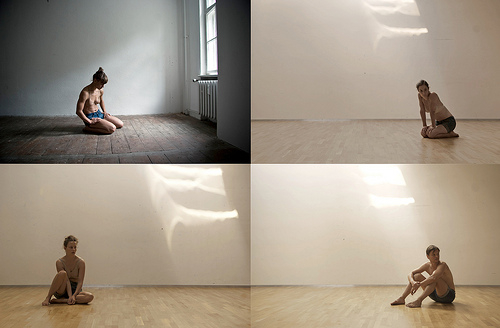 This premiere by Margrét Sara Guðjónsdóttir is picking up where she left off in 2010 with her piece ‘Soft Target.’ The continuation examines the identity game we play and how it affects our personal sense of trust and generally having our shit together. Sunn O))) collaborator Peter Rehberg provides musical accompaniment.
This premiere by Margrét Sara Guðjónsdóttir is picking up where she left off in 2010 with her piece ‘Soft Target.’ The continuation examines the identity game we play and how it affects our personal sense of trust and generally having our shit together. Sunn O))) collaborator Peter Rehberg provides musical accompaniment.
EVAPORATED LANDSCAPE
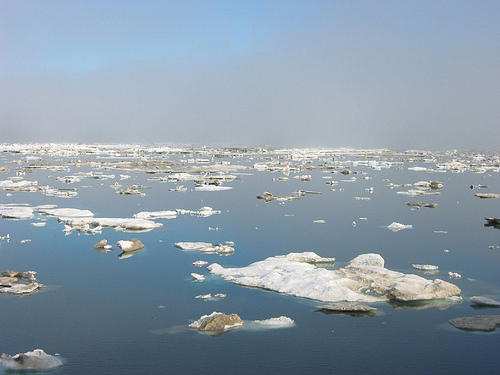 Everything is ephemeral in the world Mette Ingvartsen has created. In this choreography, as quickly as something becomes recognisable it becomes fleeting, with natural and futuristic objects masquerading as one another. Rather than focus on existence, this piece is all about the relationship of dissolution.
Everything is ephemeral in the world Mette Ingvartsen has created. In this choreography, as quickly as something becomes recognisable it becomes fleeting, with natural and futuristic objects masquerading as one another. Rather than focus on existence, this piece is all about the relationship of dissolution.
CONTACT GONZO
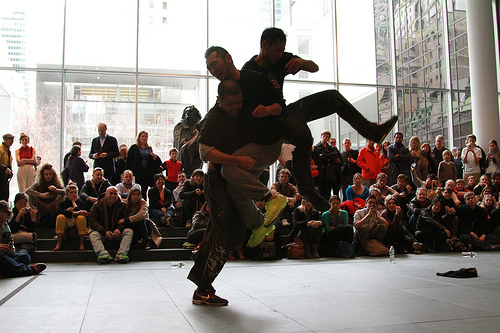 Hailing from Osaka, Japan, this performance group keeps it close by clashing their bodies together in various encounters. Ranging from violent confrontation to tender brushes, they constantly toe the line between tension and release, seeing just how far bodies can go against each other.
Hailing from Osaka, Japan, this performance group keeps it close by clashing their bodies together in various encounters. Ranging from violent confrontation to tender brushes, they constantly toe the line between tension and release, seeing just how far bodies can go against each other.
NOTHING’S FOR SOMETHING
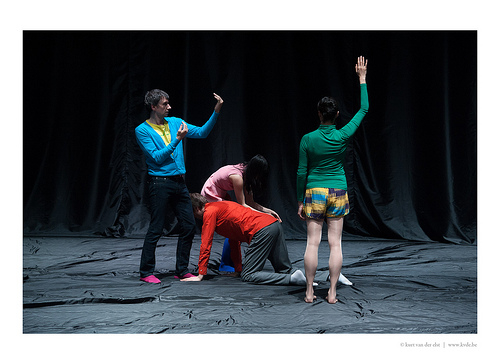 This piece by performance duo Fieldworks takes place in the Kassinn theatre, but stay on guard. They have built a reputation of leading their audiences astray in seemingly normal situations, only to entirely flip the script of what is expected in a particular environment.
This piece by performance duo Fieldworks takes place in the Kassinn theatre, but stay on guard. They have built a reputation of leading their audiences astray in seemingly normal situations, only to entirely flip the script of what is expected in a particular environment.
Buy subscriptions, t-shirts and more from our shop right here!

